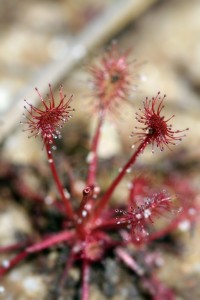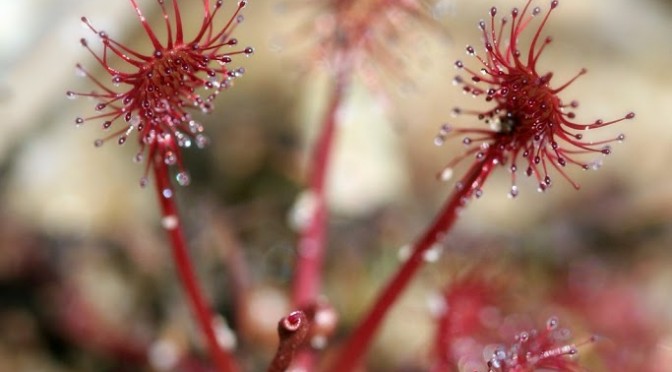 Consider the cunning necessary for a plant – about the slowest-moving life form on earth – to lure, capture and consume a fast-moving insect.
Consider the cunning necessary for a plant – about the slowest-moving life form on earth – to lure, capture and consume a fast-moving insect.
Sundews set their insect traps well below where their flowers bloom and lure prey by means of a sticky substance secreted by hairs on each of the leaves… it glistens in the sunlight and serves as a beacon to passing insects (and wandering photographers).
I was surprised to find spatulate-leaved sundews, as well as thread-leaved sundews, outside of a bog in the mostly dry sandy soil near the Speedwell entrance to the Franklin Parker Preserve.
“Here is a bloodthirsty little miscreant that lives by reversing the natural order of higher forms of life preying upon lower ones, an anomoly in that the vegetable eats the animal.” –Neltje Blanchan


How big is the plant? Its hard to tell.
Sweet. I’m a carnivorous plant aficionado. I’m bummed I missed them.
@ SNJGardener: Tiny. The traps are the size of a small coin.
Awesome!

Isabelle and I are growing some from seeds (along with venus fly-traps) on the kitchen windowsill. We planted them at Christmas and they are about one inch tall. It’s slow going.